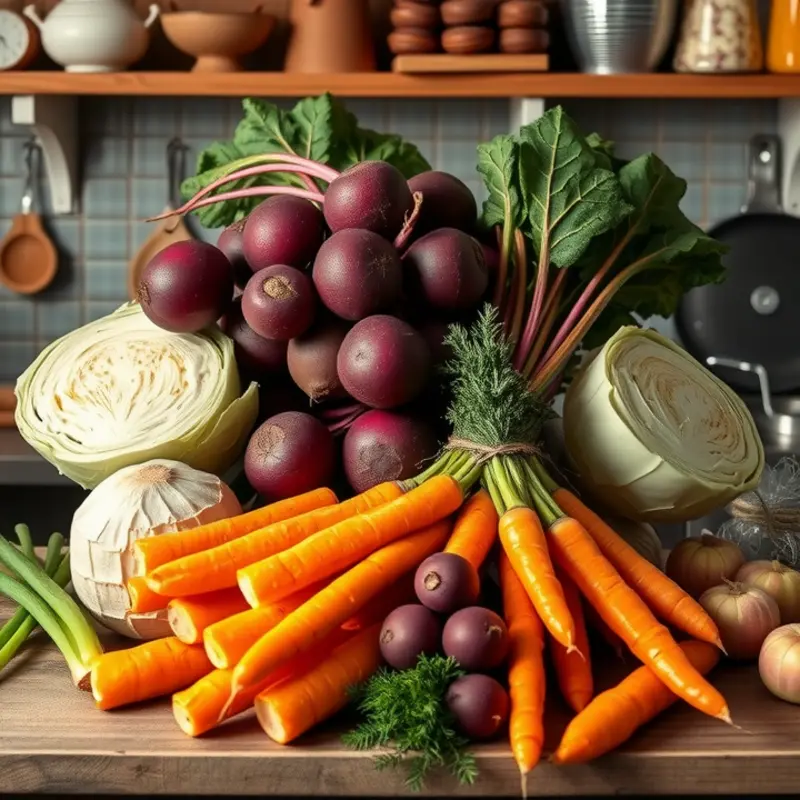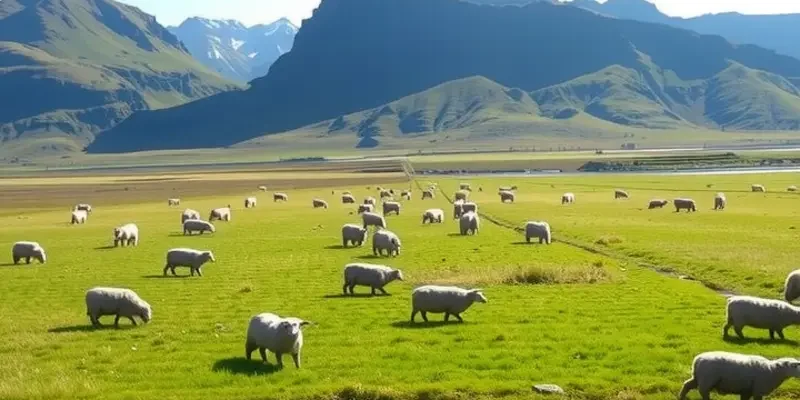Across the world, traditional soups from cold regions embody the spirit of community, heritage, and resourcefulness. These comforting dishes not only warm the body but also reflect the culture and history of those who craft them. From the Arctic Arctic to the Alpine highlands, let us embark on a flavorful journey to explore the unique ingredients and stories behind these delightful soups that have stood the test of time.
Icelandic Hangikjötssúpa: The Smoky Comfort of the North

Iceland’s culinary landscape is as transformative and dramatic as its terrain. Hangikjötssúpa, a traditional Icelandic soup, embodies this spirit perfectly. Literally translated to ‘smoked meat soup,’ it is a cherished dish that captures the essence of Iceland’s age-old food preservation techniques and local produce.
At the heart of Hangikjötssúpa lies its main protagonist, smoked lamb. Iceland’s unique smoking techniques often involve using dried sheep dung, which gives the lamb a distinct flavor echoing its harsh but rich environment. This practice of smoking, as ancient as the Viking settlers themselves, ensures the meat stays preserved over the long, dark winters.
Creating Hangikjötssúpa begins with tenderizing this smoked lamb, which is then combined with the simplest yet most nourishing ingredients that the Icelandic land offers. Potatoes, carrots, and sometimes swedes are added, reflecting the kind of root vegetables that thrived in the Icelandic soil. These vegetables lend the soup a hearty thickness, turning it into a meal that sustains and warms even in the coldest months.
The vegetables and meat are cooked with a selection of herbs like thyme and bay leaves, which gently amplify the natural flavors. The smokiness of the lamb mingles seamlessly with the subtle sweetness of the carrots, while the potatoes provide a comforting texture. These elements create a savory aroma that drifts through Icelandic homes, especially during festive occasions.
The story of Hangikjötssúpa is not just about its ingredients but is also about the occasions it marks. This soup is often served during Þorrablót, an Icelandic midwinter festival celebrating old Norse traditions. Family members gather around the dining table, not just to eat but to share in the preservation of cultural narratives. It’s a flavorful reminder of heritage, with each bite serving as a link between the past and present.
For those interested in crafting a meal reflective of its roots, making Hangikjötssúpa involves more than just following a recipe. It requires an appreciation for the preservation methods that define Icelandic food culture and an understanding of how each component honors the land’s offerings. By mirroring these traditions, the soup becomes more than sustenance; it becomes an experience of Iceland itself.
While smoked lamb can be challenging to find outside Iceland, substitutions can bring similar comforting vibes. Smoked ham or even high-quality cured meats stand in well for those eager to try this dish beyond Icelandic borders. Practical Ingredient Batching can also help in planning such a recipe with available local produce.
With each spoonful of Hangikjötssúpa shared with friends and family, the essence of Icelandic tradition is celebrated anew, reflecting the resilience and creativity of a community harmonizing with its environment.
Russian Borscht: A Palette of Tradition and Culture

Russian Borscht stands as a culinary masterpiece. Its deep burgundy hue signals the starring role of beets, which lend the soup not only color but also an earthy sweetness. This vibrant dish is steeped in Eastern European culture, representing a tapestry of flavors that speak volumes of its origin.
At its core, Borscht marries simple ingredients: beets, cabbage, potatoes, and often a form of meat, creating a symphony of taste that is both rich and comforting. The balance between the sweetness of the beets and the savory notes of the meat makes every spoonful an exploration of harmony. While each family might add a unique twist, the essence remains consistent, capturing the soul of a region famed for its robust flavors.
The preparation of Borscht is considered an art form. Beets are meticulously peeled, chopped, and boiled until they reach the perfect consistency, offering both texture and taste. Cabbage and potatoes are added to enhance the nutritional density and bulk, advantageous for nourishing families during harsh winters. The sour cream garnish, slowly melting into the hot soup, provides a luxurious creaminess, rounding out the flavors beautifully.
Borscht’s cultural importance extends beyond its ingredients. It is a dish that brings people together, often served during family gatherings where stories are shared and bonds are strengthened. The soup not only nourishes the body but also reconnects individuals with their cultural roots. It is a reminder of traditions passed down through generations, a constant in life’s ever-changing landscape.
In the context of sustainable eating, Borscht showcases the value of local produce. Using seasonal ingredients contributes to the community’s economy and ensures that the flavors are at their peak. Root vegetables like beets and potatoes thrive in the colder climates of Eastern Europe, making them both accessible and affordable for locals. This focus on local sourcing is akin to principles discussed in this article on sustainable kitchen practices, emphasizing how eco-friendly choices can also be culturally enriching.
Moreover, Borscht reiterates the importance of mindful eating. Every ingredient serves a purpose, and the care taken during preparation reflects a deeper understanding of food’s role in cultural identity. This appreciation echoes themes of connecting more profoundly with what we consume, similar to the ideas explored in mindful eating discussions.
Ultimately, Borscht is more than just a soup. It represents resilience, cultural pride, and the timeless connection between people and their homeland. Through its hearty flavors and cultural richness, it invites us to savor not just the meal but the stories woven into each bowl.
Final words
Traditional cold-region soups are more than just culinary delights; they are a testament to resilience, culture, and deep agricultural roots. As you explore dishes such as Icelandic Hangikjötssúpa and Russian Borscht, you’ll uncover the shared human experience of using what nature provides to create something extraordinary. These soups comfort us in cold weather and invite us to appreciate the history and warmth of each bowl. Embracing these traditions in your kitchen not only enriches your meals but also connects you to a global family that values food as a source of joy and community.








